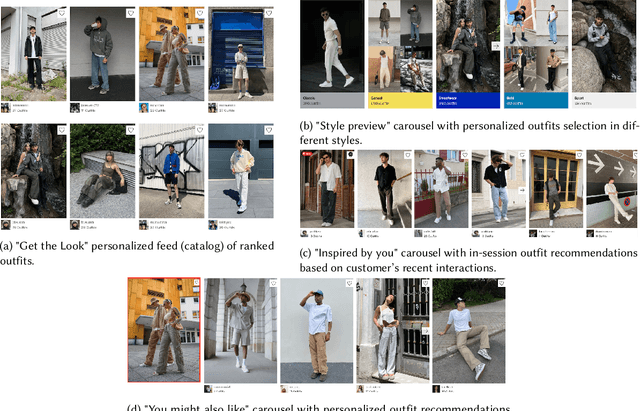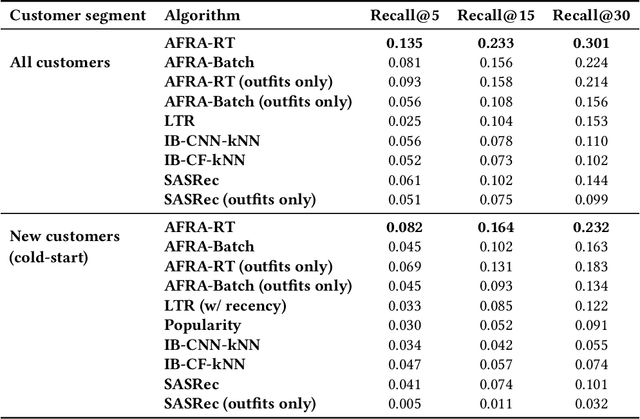Duy Pham
Reusable Self-Attention-based Recommender System for Fashion
Nov 29, 2022



Abstract:A large number of empirical studies on applying self-attention models in the domain of recommender systems are based on offline evaluation and metrics computed on standardized datasets, without insights on how these models perform in real life scenarios. Moreover, many of them do not consider information such as item and customer metadata, although deep-learning recommenders live up to their full potential only when numerous features of heterogeneous types are included. Also, typically recommendation models are designed to serve well only a single use case, which increases modeling complexity and maintenance costs, and may lead to inconsistent customer experience. In this work, we present a reusable Attention-based Fashion Recommendation Algorithm (AFRA), that utilizes various interaction types with different fashion entities such as items (e.g., shirt), outfits and influencers, and their heterogeneous features. Moreover, we leverage temporal and contextual information to address both short and long-term customer preferences. We show its effectiveness on outfit recommendation use cases, in particular: 1) personalized ranked feed; 2) outfit recommendations by style; 3) similar item recommendation and 4) in-session recommendations inspired by most recent customer actions. We present both offline and online experimental results demonstrating substantial improvements in customer retention and engagement.
* FashionXRecSys'22: Workshop on Recommender Systems in Fashion, September 23, 2022, Seattle, WA. Parts published in RecSys 2022 (industry track)
Outfit Generation and Recommendation -- An Experimental Study
Nov 29, 2022Abstract:Over the past years, fashion-related challenges have gained a lot of attention in the research community. Outfit generation and recommendation, i.e., the composition of a set of items of different types (e.g., tops, bottom, shoes, accessories) that go well together, are among the most challenging ones. That is because items have to be both compatible amongst each other and also personalized to match the taste of the customer. Recently there has been a plethora of work targeted at tackling these problems by adopting various techniques and algorithms from the machine learning literature. However, to date, there is no extensive comparison of the performance of the different algorithms for outfit generation and recommendation. In this paper, we close this gap by providing a broad evaluation and comparison of various algorithms, including both personalized and non-personalized approaches, using online, real-world user data from one of Europe's largest fashion stores. We present the adaptations we made to some of those models to make them suitable for personalized outfit generation. Moreover, we provide insights for models that have not yet been evaluated on this task, specifically, GPT, BERT and Seq-to-Seq LSTM.
* fashionXrecsys '20: Workshop on Recommender Systems in Fashion, 14th ACM Conference on Recommender Systems, September 22--26, 2020, Virtual Event, Brazil
 Add to Chrome
Add to Chrome Add to Firefox
Add to Firefox Add to Edge
Add to Edge